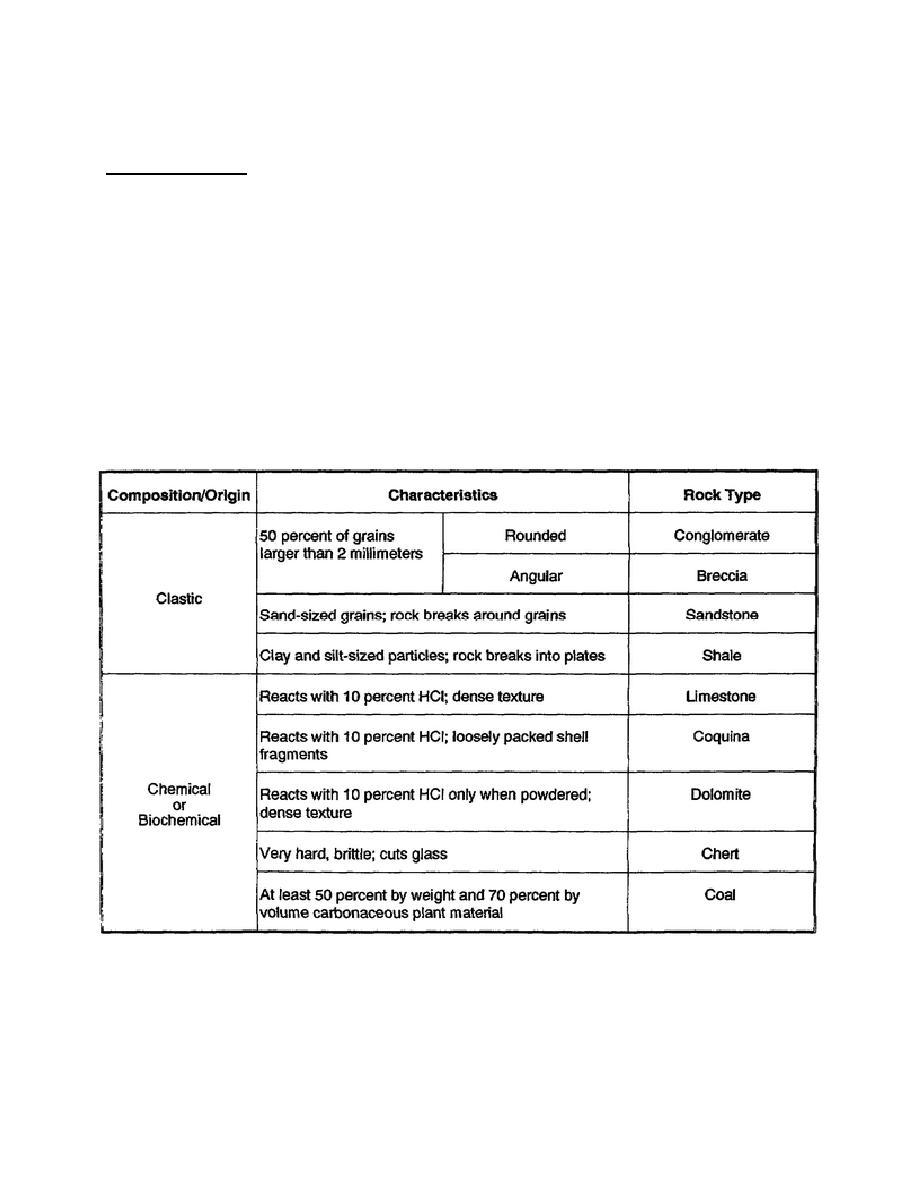
pumice nor scoria can be used for the construction of load-bearing structures; however, they can both be used as
lightweight aggregate or as insulating material. In general, obsidian possesses relatively poor engineering
properties; thus, it is not a good construction resource.
2. Sedimentary Rocks. Sedimentary rocks, the most common of the three major categories of rock types,
comprise approximately 75 percent of the exposed surface of the earth. These abundant rocks are made up of
consolidated particles that have either accumulated in place or have been brought in by a transporting agent, such
as wind, water, or ice. The particles are initially deposited in horizontal layers, or beds; which can be used to
distinguish sedimentary rocks from the normally massive and nonbedded igneous rocks previously discussed.
Over time, the individual sedimentary particles become consolidated by compaction from overlying sediments, by
cementation through deposition of mineral matter in available pore spaces, or by recrystallization of component
minerals. Most sedimentary rocks are composed of particles derived from weathering and erosion of preexisting
igneous, sedimentary, and metamorphic rocks. If this is the case, the resulting sedimentary rock is referred to as a
clastic rock. On the other hand, if the sedimentary accumulation was derived from chemical or biological
processes, the resulting rock is referred to as a chemical or biochemical sedimentary rock. The mode of origin,
coupled with individual rock characteristics, is used to classify sedimentary rocks (see figure 1-11).
NOTE:
Pyroclastic volcanic tuff, which was previously discussed as an extrusive igneous rock, is
considered by some to be an elastic sedimentary rock.
Figure 1-11. Classification of sedimentary rocks
EN5341
1-18



 Previous Page
Previous Page
